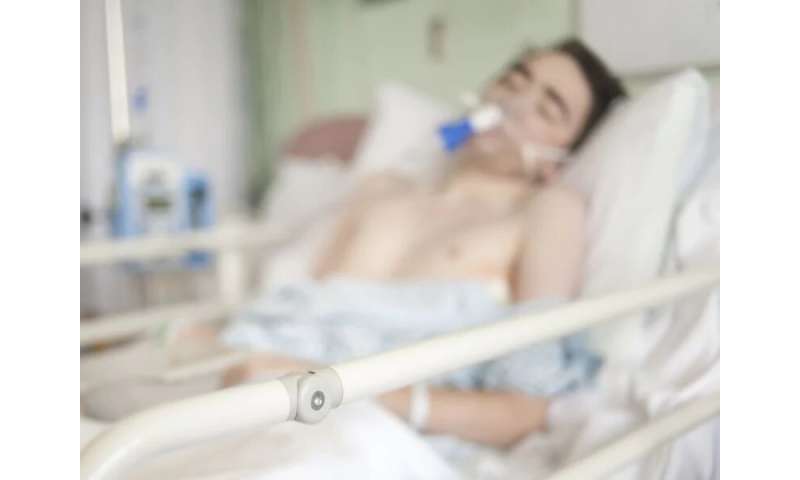
New research suggests that COVID-19 is far from benign when it strikes young adults: Once they are hospitalized, 1 in 5 wind up in the ICU and many need ongoing medical care even after they are free of the virus, scientists report.
The Harvard University doctors reviewed more than 3,200 coronavirus cases where adults aged 18 to 34 needed hospitalization. Twenty-one percent ending up requiring ICU admission and 10 percent needed a ventilator to breathe. Overall, 2.7 percent of young hospitalized patients died. Another 3 percent required care in a post-acute treatment facility even after clearing the virus from their bodies.
The proportion of young people who have contracted the virus has increased in recent months, as cities and states have relaxed restrictions on businesses and some people have returned to work. Last month, the World Health Organization warned that young adults are emerging as the primary spreaders of the virus in many countries, the Washington Post reported.
In the new report, published Sept. 9 as a research letter in the journal JAMA Internal Medicine, the researchers found that certain preexisting conditions, such as hypertension, diabetes and obesity, were more common among the young patients who had severe health impacts or died from the virus.
As happens in older COVID-19 patients, men were also more likely than women to develop serious or life-threatening conditions. And more than half of the hospitalized patients were Black or Hispanic, according to the study.
“Given the sharply rising rates of COVID-19 infection in young adults, these findings underscore the importance of infection prevention measures in this age group,” wrote the team led by Dr. Scott Solomon, from the cardiovascular division at Brigham and Women’s Hospital in Boston.
Another finding, reported on Thursday, challenges the timeline for when COVID-19 began spreading through the United States. Researchers showed the number of patients complaining of coughs and respiratory illnesses surged at a sprawling Los Angeles medical system starting in late December, the Post reported.
The authors of the report, published Thursday in the Journal of Medical Internet Research, suggest that coronavirus infections may have caused this spike weeks before U.S. officials began warning the public about an outbreak.
“This is consistent with the growing body of data that suggests that there’s been community spread much earlier than we had anticipated,” study author Joann Elmore, an epidemiologist at the David Geffen School of Medicine at the University of California at Los Angeles, told the Post.
Colleges scramble to contain COVID spread on campus
Just weeks into the fall semester, universities and colleges in all 50 states are now struggling to contain the spread of coronavirus on their campuses.
More than 40,000 cases of COVID-19 have been reported among students, staff and faculty nationwide, CNN reported. That number is likely higher due to a lag from schools that update their data every few days.
Many outbreaks have cropped up after gatherings at fraternities and sororities: One cluster of COVID-19 cases was traced back to a fraternity party held at the University of New Hampshire. More than 100 people attended the Aug. 29 party and few wore masks, CNN reported.
At Indiana University Bloomington, 30 sorority and fraternity houses have been ordered to quarantine following what campus officials have described as an “alarming increase” in COVID-19 cases within the houses, CNN reported.
Meanwhile, the University of Wisconsin-Madison has told all undergraduate students they must restrict their movements for the next two weeks, to try to reverse a rise in COVID-19 cases, CNN reported. The university also directed nine campus fraternities and sororities with off-campus live-in houses to quarantine for at least 14 days.
“We’ve reached the point where we need to quickly flatten the curve of infection, or we will lose the opportunity to have campus open to students this semester, which we know many students truly want,” Chancellor Rebecca Blank said in a statement.
Some of the highest number of cases are at Miami University, University of South Carolina, Ohio State University and East Carolina University, all of which have over 1,000 confirmed cases, CNN reported. The University of Missouri has 862 confirmed cases, while Missouri State University has 791, the CNN tally shows.
Even what is left of the college football season is on shaky ground: A number of teams have postponed their openers this weekend because of the pandemic, the Post reported. Some of these games may not be made up, or won’t be made up until December at the earliest. And other postponements cannot be ruled out as colleges continue to deal with spikes in coronavirus cases.
COVID vaccine trial halted following illness
Final testing of a leading coronavirus vaccine candidate was paused by drug maker AstraZeneca on Tuesday after a trial volunteer experienced a serious adverse reaction.
The disappointing news came as drug companies around the world race to develop a coronavirus vaccine that could bring an end to an international pandemic that has claimed almost 900,000 lives, The New York Times reported.
AstraZeneca’s vaccine is a front-runner, with late-stage clinical trials underway in different countries. If the cause of the reaction turns out to be related to the vaccine, efforts to have it ready by the end of the year could be delayed, the Times reported.
In a statement, AstraZeneca described the trial’s halt, which was done voluntarily, as a “routine action which has to happen whenever there is a potentially unexplained illness in one of the trials, while it is investigated, ensuring we maintain the integrity of the trials.”
The company added that in large trials participants sometimes become sick by chance “but [the cases] must be independently reviewed to check this carefully.”
A person familiar with the situation, who spoke on the condition of anonymity, told the Times that the participant who had the suspected adverse reaction had been volunteering in a trial based in the United Kingdom. The volunteer was diagnosed with transverse myelitis, an inflammatory syndrome that affects the spinal cord and is often sparked by viral infections.
“This is the whole point of doing these Phase 2, Phase 3 trials,” Dr. Phyllis Tien, an infectious disease physician at the University of California, San Francisco, told the Times. “We need to assess safety, and we won’t know the efficacy part until much later. I think halting the trial until the safety board can figure out whether or not this was directly related to the vaccine is a good idea.”
Cases keep mounting
By Friday, the U.S. coronavirus case count neared 6.4 million as the death toll passed 191,600, according to a Times tally.
According to the same tally, the top five states in coronavirus cases as of Friday were: California with over 753,000; Texas with more than 677,800; Florida with over 654,700; New York with more than 446,600; and Georgia with over 272,500.
Curbing the spread of the coronavirus in the rest of the world remains challenging.
India has overtaken Brazil to become the country with the second-highest number of coronavirus cases in the world, the Times tally shows. The country’s case count is now over 4.5 million; only the United States has recorded more. More than 76,000 people in India have died of COVID-19, making it the worst-affected nation in Asia.
Meanwhile, Brazil posted over 4.2 million cases and over 129,500 deaths as of Friday, the Times tally showed.
Unlike the United States and Brazil, where the number of new cases have eased in recent weeks, India has been reporting the highest daily increases in cases in the world since early August, the Post reported.
After instituting the world’s largest lockdown last spring, Jayaprakash Muliyil, a leading Indian epidemiologist, predicted that the country’s daily reported cases will continue to rise in coming weeks. He told the Post that the daily cases could double over the next month before retreating.
Cases are also spiking in Russia: The country’s coronavirus case count has passed 1 million, the Times reported. As of Friday, the death toll in Russia was 18,300.
Source: Read Full Article


